Sunngindale’s Old Course has long been the consensus pick for the best of the heathland courses. While others, like it’s younger brother the New Course, Swinley Forest, and St. George’s Hill have crept up on it in the rankings, the Old still usually comes out on top. It has been a mainstay in the world top 50 since well before I started looking at these lists in the late 90s.
While I haven’t played enough of the world top 100 to comment on the Old Course’s placement, I’d agree with the consensus that this is the best of at least the London area heathland courses. Why? Variety. I don’t believe that I’ve ever played a course with such a delightful mix of holes. There are really short holes, there are really long holes. There are long vistas, there are funky uphill blind shots. There are big undulating greens and there are small flat ones.
And for the golf course architecture buffs, there are the older Willie Park Jr. holes and the newer Harry Colt ones. The major difference between these is in the green sites and the shaping around them. Park Jr.’s green tend to be on flat or gently sloping land with open approaches while Colt built several of his greens into hillsides with diagonal bunkers on the approach. I usually like consistency in shaping style across the course but the blend of these two style just works on the Old Course. Maybe it’s because Colt’s style works better on hillsides and Park Jr.’s works better on flat land and were always going to have to be a few of each type of hole on this sprawling piece of forested heathland.
But I don’t want to spend too much time getting into who did what on the Old Course because I’d rather talk about the individual holes. This course has more good holes than almost any course that I can think of. Several are quite quirky. It may not be much of a test of golf for the best players in the world anymore but for the rest of us, I can hardly imagine a more enjoyable one on which to play golf.
The drizzle stopped after my morning round on the New but it kept everyone off the course, which I had pretty much all to myself. One of the quaint (but expensive) homes to the right of the fairway was burning wood and the set the tone perfectly for this course on this cold, grey day. The first hole is a short and wide-open par 5. It introduces us to some of the English quirk that we’ll find throughout this course in this case, a series of diagonal, heather-covered ridges running into the edges of the fairway starting about 150 yards short of the green. On Google Earth, it looks like these formed a hedge line along the edge of an old property but apparently there’s some archaeological significance here—they dug up some ancient pottery which is in a museum in nearby Reading.
While I haven’t played enough of the world top 100 to comment on the Old Course’s placement, I’d agree with the consensus that this is the best of at least the London area heathland courses. Why? Variety. I don’t believe that I’ve ever played a course with such a delightful mix of holes. There are really short holes, there are really long holes. There are long vistas, there are funky uphill blind shots. There are big undulating greens and there are small flat ones.
And for the golf course architecture buffs, there are the older Willie Park Jr. holes and the newer Harry Colt ones. The major difference between these is in the green sites and the shaping around them. Park Jr.’s green tend to be on flat or gently sloping land with open approaches while Colt built several of his greens into hillsides with diagonal bunkers on the approach. I usually like consistency in shaping style across the course but the blend of these two style just works on the Old Course. Maybe it’s because Colt’s style works better on hillsides and Park Jr.’s works better on flat land and were always going to have to be a few of each type of hole on this sprawling piece of forested heathland.
But I don’t want to spend too much time getting into who did what on the Old Course because I’d rather talk about the individual holes. This course has more good holes than almost any course that I can think of. Several are quite quirky. It may not be much of a test of golf for the best players in the world anymore but for the rest of us, I can hardly imagine a more enjoyable one on which to play golf.
The drizzle stopped after my morning round on the New but it kept everyone off the course, which I had pretty much all to myself. One of the quaint (but expensive) homes to the right of the fairway was burning wood and the set the tone perfectly for this course on this cold, grey day. The first hole is a short and wide-open par 5. It introduces us to some of the English quirk that we’ll find throughout this course in this case, a series of diagonal, heather-covered ridges running into the edges of the fairway starting about 150 yards short of the green. On Google Earth, it looks like these formed a hedge line along the edge of an old property but apparently there’s some archaeological significance here—they dug up some ancient pottery which is in a museum in nearby Reading.
The green is simple and slopes with the lay of the land from front right to back left, typical of the older Park Jr. greens throughout the course.
The second hole is an outstanding, but very difficult long par 4. The hole bends gently to the left and the drive is on a diagonal over another heather-covered ridge and a creek. This hole’s charming English quirk is a neighborhood road that crosses the fairway about 250 yards from the tee.
But not all quirks are charming. The second is semi-blind over a ridge to a small green that slopes away and is fronted by a deep bunker. There’s some room (but not a lot) on the right to run the ball onto the green but if you push is just a little, you’re in the heather. I’d think of the first two holes as one hole with two putting greens and a par of 9. You’re probably more likely to make 4 on the par 5 first and 5 on the par 4 second than vice versa.
The third is the first of what is by far the best set of drivable par 4s that I’ve seen on any course. I suspect that this is a Colt hole because of all of the bunkering and mounding around the green. This is really a textbook drivable par 4; while the carry over the bunkers on the right is only about 190 yards, you want to keep your ball up the lower left side because the green is narrow and two-tiered from high left to low right. An approach from the left side will leave an awkward pitch into a narrower aspect of the green which slopes away from you. So the right side of the fairway is optimal, but the bunkers continue all the way to the green.
My drive (near the bunker on the right) was actually too good on this day because they stuck the pin in the back-right corner. Oops.
The fourth features all of the standard elements of a Colt par 3. Uphill? Check. Green built into the side of a hill with bunkers on the low side? Check. Deeper than wide? Check. Actually this green is pretty big and the narrowness isn’t an issue. But the slope is—it tilts pretty good from back to front.
The drive on the par 4 fifth is one of the iconic vistas in heathland golf although I’m not really sure why. It’s an attractive hole, but I never thought of it as an aesthetic standout when I saw those pictures—especially compared to some of the others that you can take on both this and nearby courses.
But it is a very good and tough hole. The bunkers on the right start at about 235 yards and narrow the fairway considerably if you go past 250. The approach to the green has two quirks: (1) a pond 40 yards short of the green with a bizarre wood plank running down its length and (2) a random heather-covered mound about 20 yards short and left of the green. Neither of these should be a factor for good players who hit good drives but they would cause all kinds of problems for higher handicap golfers.
But it is a very good and tough hole. The bunkers on the right start at about 235 yards and narrow the fairway considerably if you go past 250. The approach to the green has two quirks: (1) a pond 40 yards short of the green with a bizarre wood plank running down its length and (2) a random heather-covered mound about 20 yards short and left of the green. Neither of these should be a factor for good players who hit good drives but they would cause all kinds of problems for higher handicap golfers.
The sixth hole isn’t one of the course’s better holes although the heather covered ridges that separate the driving zone from the green and the steeply left-to-right pitched green are interesting.
Just behind the sixth green is the tee for the par 4 seventh, where the Old Course goes from being very good to being magical. The drive is a real ‘what the hell?’ moment; the first 115 yards are straight uphill over a bunker. No architect would place the tee here today—they’d have us walk the 100 yards up the hill and just start the hole from there.
But then they’d be depriving us of one of the biggest surprises and one of my favorite moments on any course that I’ve played: the moment when you crest the hill and it’s like you’re stepping into a grand cathedral of golf. The green is definitely a Colt—built into a steep right-to-left with bunkers and a drop-off to its left. Apparently the original Park Jr. green was somewhere in the hollow to the left in what’s now (some 100 years) later, a mature forest.
To climb this hill, Colt does a switchback in his routing with another Coltian par 3. Although I didn’t think that this hole was particularly special, the setting is just charming.
The ninth is the second of the Old’s great drivable par 4s. While this hole gets less attention than the third and the eleventh, I found it brilliant. It’s only about 260 yards from the tips to the front of the green, but bunkers cut diagonally across the fairway from the left starting at 215 yards. The green angles from front-left to back-right and the back-right corner sits up on a higher tier (out of play.
While the flag was on the easier left side of the green on this day, the further right that they put the flag, the more important that you approach from the left side. If the flag were all the way back right and you missed, say in the right fairway bunker about 30 yards short of the green, you’d have 40 yard fairway bunker shot over another bunker to maybe a 30 foot deep area that slopes into the woods if you miss long. While you can recover from most places if the pin is on the left, I’m not sure that I’ve ever seen a pin where the angle of approach is as important as a back-right pin here.
In their 1994 Shell’s Wonderful World’ of Golf match with a back-right pin, Nick Faldo drove it in the short right bunker then put his next one over the green. Greg Norman drove it in the left green side bunker. Both made 4 on this 275 yard hole.
The other oft-photographed hole on the Old Course is the long par 4 tenth. This is a justifiably revered hole; bunkers pinch the fairway at about 260 starting on the right and there are two up the left for those who don’t properly shape their ball into this left-to-right sloping fairway. While it wasn’t too hard to hit the fairway on this late-winter day (I still failed), I think that it’d be very difficult when the course plays firm in the summer.
The second is uphill to the largest and most heavily contoured green on the course. I wish I had gotten a picture of it.
The eleventh is the third drivable par 4 and is definitely the strangest of the bunch. It features another short, uphill drive over a bunker to a blind fairway on the other side. I’m not sure that I’d recommend trying to drive this green even if you’ve got the length because the line with the green is protected by several stocky pine trees. I’m a bit torn about these trees because if you pushed your drive, you’d already be penalized by the heather over there. My preference would be to leave one or two of them and remove the rest so that there was still some aerial hazard without completely blocking the path or chance of recovery.
If you lay up, it’s important to keep your ball in the right center of the fairway because the green is very small. Especially if the flag were on the left side of the green, it’d be very difficult to play to it from the left side of the fairway.
If you lay up, it’s important to keep your ball in the right center of the fairway because the green is very small. Especially if the flag were on the left side of the green, it’d be very difficult to play to it from the left side of the fairway.
The long par 4 twelfth is clearly another Colt hole because it features his signature shelf green and diagonal approaching bunkers. It’s important to keep your drive near the bunkers up the left side because the approach shot can get quite long and the angle very awkward from the right side. The green is protected by a mound in the front-right and the drop-off on the right is quite steep. Apparently Park Jr.’s twelfth green was on the flatter ground to the right of this green. Yet another great hole.
After a fairly uninteresting drop shot par 3, we come to a short par 5 that I just love. It’s a pretty tough driving hole as the fairway narrows at the bunker, which is just 240 from the tips. The second is blind over a diagonal string of bunkers that angle from short-right to long-left, between 90 and 175 yards short of the green. While they shouldn’t be an issue off a decent drive, they make the second very interesting for shorter hitters.
For longer hitters, the bigger issue is the bunkers left and right on the approach to the green. You have to be precise if you’re going for the green or you’re likely to have a 40 yard bunker shot for your third. The green is one of my favorite on the course as is exemplary of the Park Jr. greens, resting simply on the flat land. A wonderfully simple green site after several challenging ones.
The very long par 3 fifteenth offers three choices of teeing grounds. From the left markers, it’s about 215 to the front but the green is open. Then there are a set of markers just behind the fourteenth green which play a little shorter, but require you to skirt the front right green side bunker. The toughest are the set on the right that play about 220 to the front and require you to hit a fade or carry the front right green side bunker. The green is simple and flat and the sharp edges on the bunkers made this green complex look like something out of the Melbourne sand belt. Very good long par 3.
We close with three medium-long par 4s. The sixteenth seems to be channeling Trent Jones’ soon-to-be-former redesign of Oakland Hills, with clusters of fairway bunkers left and right. More interesting is the ring of fairway bunkers that surround the last 60 yards of the uphill approach to the green. The green appears to be another Park Jr.: largest and laying simply on a gradual upslope.
While I’ve talked a lot about the Old’s great drivable par 4s, there are even more outstanding long par 4s and the seventeenth might be my favorite of the bunch. The best drive here will skirt or carry the right fairway bunkers (it’s about 240 over the most distant one). If you hedge left or pull your drive, you can easily put it into the clump of pine trees left of the fairway.
The approach is a beauty to an open green over a large bunker about 40 yards short and is framed by the eighteenth hole and the clubhouse. I’d imagine that when the course is playing firm, many will have to just carry the bunker so that their ball doesn’t run through the green.
You drive uphill and (hopefully) between two well-placed bunkers on eighteen. The approach is over another diagonal string of fairway bunkers to a green that angles from front-left to back-right and is protected by several bunkers to the sides and a mighty oak tree in the back.
When people ask me what my favorite course in England was, I always say Sunningdale's Old Course. I just loved it. I’ve never played a course with such variety. One thing that I missed on some of the top shelf London heathland courses that others around the country had in spades is quirk. While they’re none the worse for it, Colt’s courses always have a polished, modern feel. But probably in large part because of its mixed origins, the Old Course possesses enough quirk to compare favorably to some of my favorite James Braid courses. To me, that sets it apart from Swinley Forest or St. George’s Hill, which have most of the brilliance of the Old, but little of its strangeness.
I don’t think that the Old Course would pose much of a challenge to the top players today. While it’s only par 70, it’s also only about 6,650 yards from the tips. But who cares? At least 80% of the golfers who play almost any course won’t be single digit handicaps. And with a few very hard holes like 2, 10, and 15, the Old can stand up just fine to most of them too. It’s actually a perfect mix of holes to test the game of a shorter-hitting single digit handicap…like me (I wasn't up to the challenge on this day).
But regardless of your skill level, every golfer who is going to be in London should drop a few hundred pounds and play this course. Actually they should drop a few hundred more and play both the Old and the New on the same day. I can hardly imagine a better 36 hole day of golf.
I don’t think that the Old Course would pose much of a challenge to the top players today. While it’s only par 70, it’s also only about 6,650 yards from the tips. But who cares? At least 80% of the golfers who play almost any course won’t be single digit handicaps. And with a few very hard holes like 2, 10, and 15, the Old can stand up just fine to most of them too. It’s actually a perfect mix of holes to test the game of a shorter-hitting single digit handicap…like me (I wasn't up to the challenge on this day).
But regardless of your skill level, every golfer who is going to be in London should drop a few hundred pounds and play this course. Actually they should drop a few hundred more and play both the Old and the New on the same day. I can hardly imagine a better 36 hole day of golf.

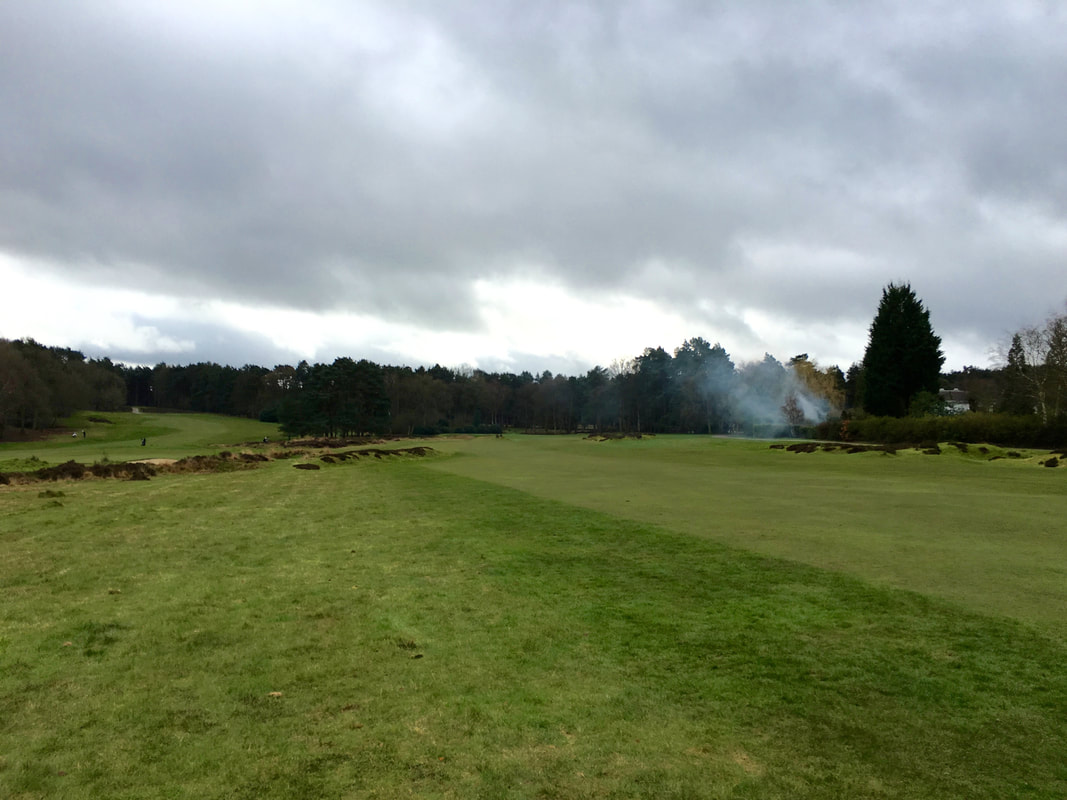






















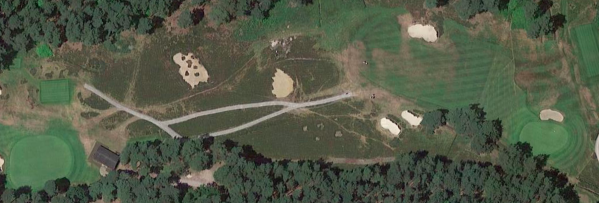

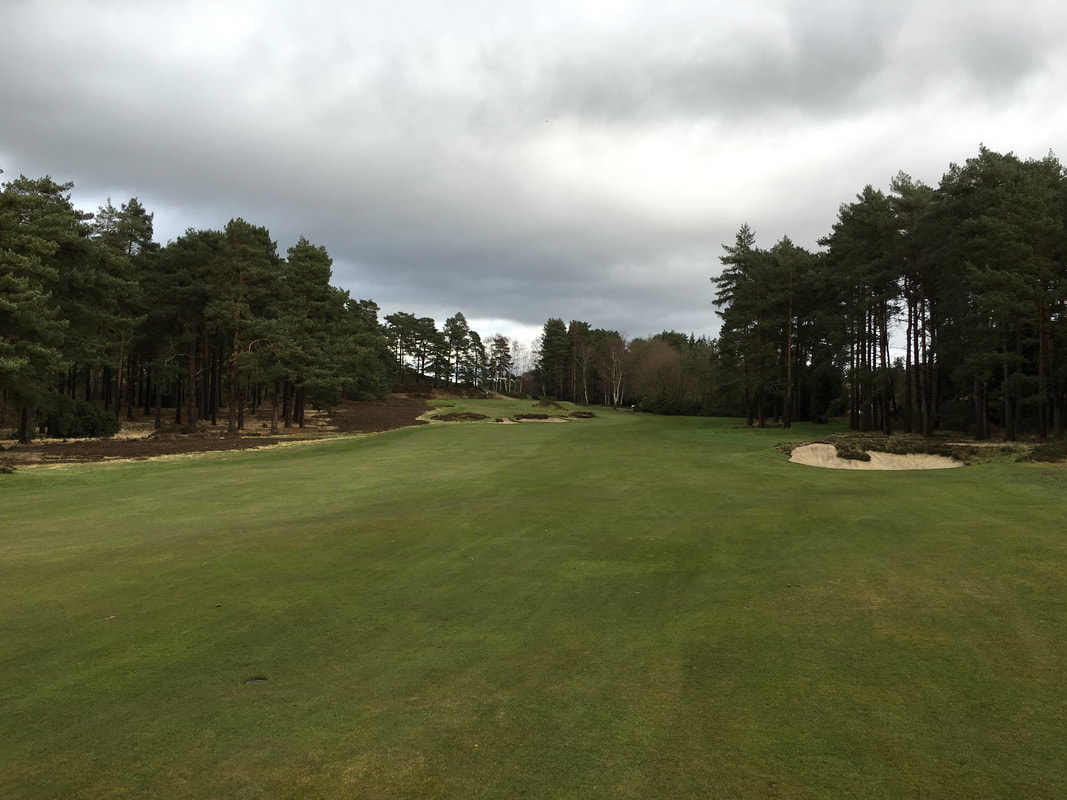
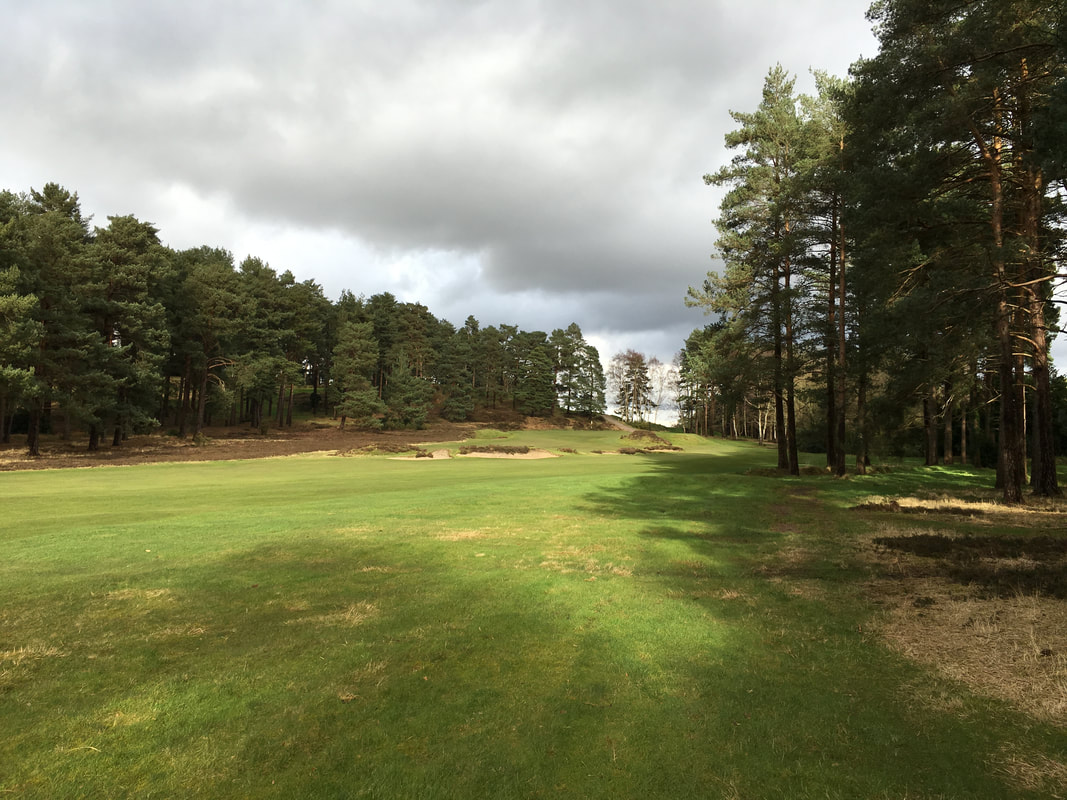




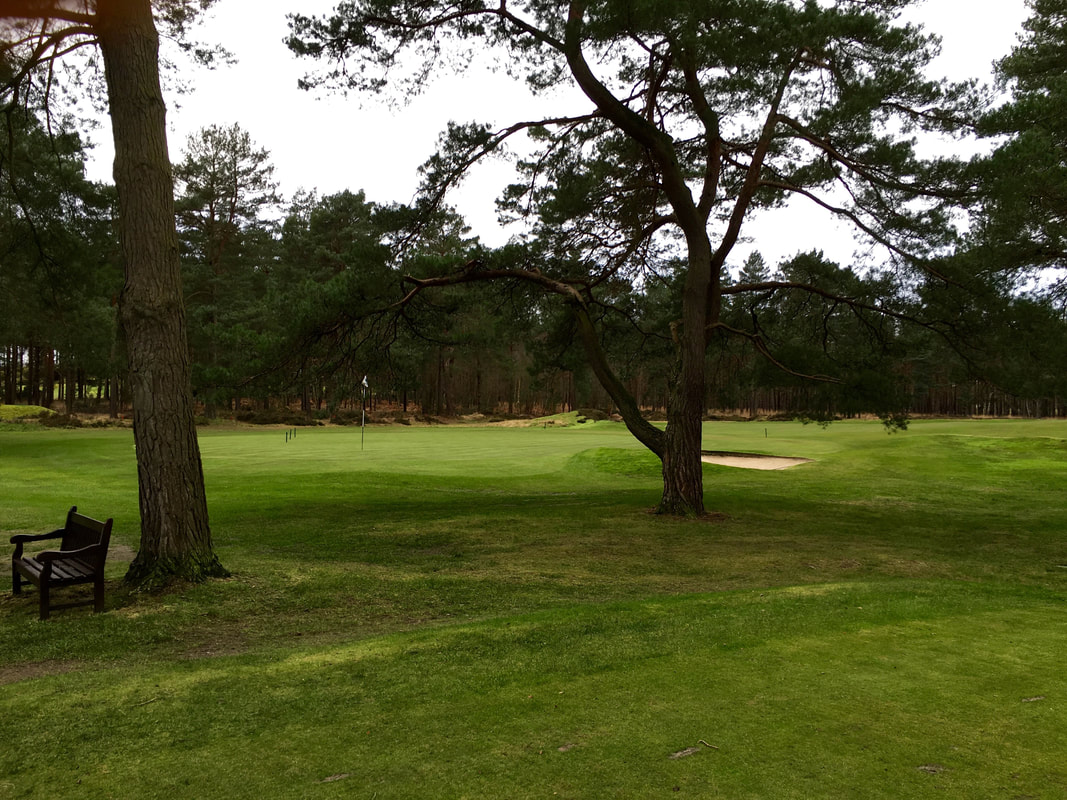



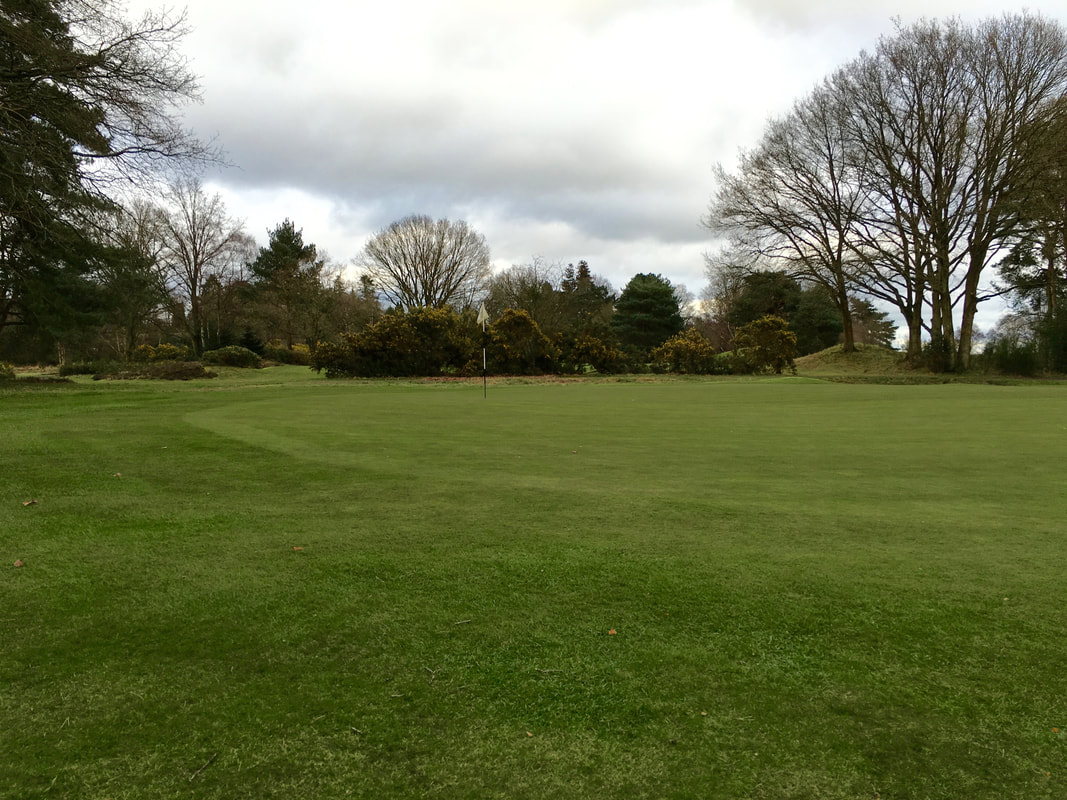




 RSS Feed
RSS Feed